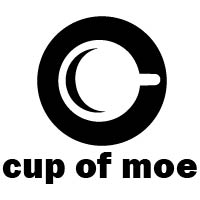We may earn money or products from the companies mentioned in this post.
1996 biographical drama “Basquiat” depicts postmodernist artist Jean-Michel Basquiat. The Brooklyn, New York-based artist rose to prominence with his graffiti-turned-collage painting style.
During the opening credits, a young boy, presumably Basquiat, and his mother walk down a museum hallway. Their journey concludes in front of Picasso’s “Guernica.” Flash forward to adulthood, and Jean-Michel Basquiat (Jeffrey Wright) emerges from a cardboard box in NYC. Basquiat enters a cafe with his friend Benny (Benicio Del Toro). Though the two are eventually kicked out after Basquiat paints a portrait in syrup on the table, Jean-Michel strikes up an acquaintance with a waitress, Gina (Claire Forlani).
After approaching Andy Warhol (David Bowie) and renowned art dealer Bruno Bischofberger (Dennis Hopper), Basquiat is ushered into the art world. Amid his newfound fame, the artist copes with addiction, tumultuous relationships, and the harsh NYC art world.
There’s quite a lot to unpack in 1996’s “Basquiat.” In his filmmaking debut, artist Julian Schnabel paints a detailed portrait of Jean-Michel Basquiat. The movie touches on several subjects, from racism to drug abuse, and even mental illness. For instance, after leaving the Mudd Club with Gina, Basquiat is unable to hail a cab. However, when Gina steps to the curb, she flags one immediately. It’s a subtle yet effective moment.
In arguably the most powerful scene, Christopher Walken plays a divisive journalist. “Can you decipher this for us?” he queries Basquiat, gesturing at one of the painter’s collages. “Decipher? It’s just words,” Basquiat nonchalantly replies. When pressed, Jean-Michel challenges “Would you ask Miles [Davis] ‘Where’d you get that note from?'” Later during the interview, the journalist asks “Do you consider yourself a painter or a black painter?” Basquiat delivers the intelligent comeback of “Oh, I use a lot of colors, not just black.”
The downward spiral rapidly becomes apparent. Gina finds Basquiat near death of an overdose and eventually leaves him, his once close friend Benny recognizes Basquiat’s self-destruction and separates from the painter. The one relationship which seems genuinely stable is Basquiat’s bond with his friend and mentor, the quirky, detached, yet gentle Andy Warhol. Of Warhol, Jean-Michel states “Andy has never asked me for a thing except to talk to you about getting off drugs.” As his work rises within the art world, there’s an exploitative vibe. Schnabel seems to offer a critique with scenes where Basquiat’s doodles on restaurant menus are lauded by those around him.
Where “Basquiat” truly shines is in its vagueness. Rather than imposing meaning, Schnabel merely presents Basquiat’s life and allows the audience to derive meaning. Instead of offering explanations, it seems to beg the question, “what do you think?” It takes an artist to apply this technique of simply daubing different elements on the canvas. Basquiat’s struggle with drug addiction, fame, exploitation, and possibly mental illness (his mother is in an institution) are touched upon. Still, there’s no forced answer, a refreshing change of pace.
From a technical perspective, “Basquiat” is masterful. It’s a well acted film with an ensemble cast. Courtney Love appears briefly as Big Pink, and Parker Posey lends a solid presentation as gallery owner Mary Boone. Willem Dafoe momentarily shows up as an electrician and painter. The always-on Gary Oldman portrays the fictional Albert Milo. As the titular Basquiat, Jeffrey Wright gives a tour de force performance. He’s at once gentle, intentionally obtuse, and tortured. David Bowie steals each scene he’s in playing renowned artist Andy Warhol as peculiar, disconnected, yet kindhearted.
Similarly, the soundtrack is ripe with a pleasant mix. Tracks range from “Suicide Mode” to “It’s All Over Now, Baby Blue,” “Beast of Burden,” and “Hallelujah.” Cinematography is gorgeous. There’s a regular motif where the sky transforms into waves with a surfer. It’s not quite explained, and doesn’t need to be. At one point, Basquiat remarks that he’d like to move to Hawaii. Near the finale, after Warhol’s death, the surfer takes a tumble. This could be a parallel for Basquiat’s struggles with drug abuse and relationships, however, like viewing a painting, that’s merely the meaning I sussed out. During drugged out moments, there’s a surreal quality fostered by unnatural jump cuts.
Ultimately, “Basquiat” is a beautifully rendered glimpse at the life of Jean-Michel Basquiat. I appreciate its focus on Basquiat’s battle with fame, addiction, and rocky relationships. Additionally, it’s refreshing how director Schnabel allows the audience to derive meaning from the film. Despite being an overall downer (spoiler alert: Basquiat overdoses at the age of 27), it’s a superb, under the radar flick which appeals to both art aficionados and non-art buffs alike.
This post may contain affiliate links. We are a participant in affiliate programs such as the Amazon Services LLC Associates Program, an affiliate advertising program designed to provide a means for us to earn fees by linking to Amazon.com and affiliated sites. However, all products are thoroughly tested and reviews are honest and unbiased.

